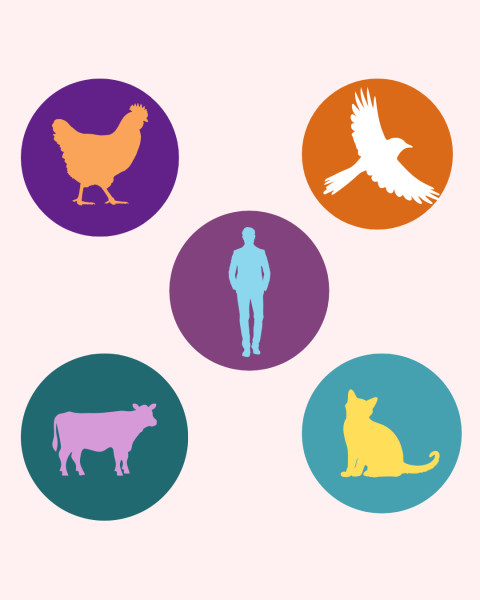
A strain of avian influenza, known as the H5 Bird Flu, has swept across the United States’ poultry and dairy industries over the past year leading to devastating effects in the agriculture industry.
According to the Centers for Disease Control and Prevention (CDC), as of Feb. 5, the strain has been detected in 11,627 wild birds, 153,866,301 poultry, 957 dairy herds and 63 humans. The virus has rapidly spread across the country, with 51 jurisdictions having outbreaks in poultry and 16 states having outbreaks in dairy cows. However, there is no evidence that the virus can spread from person to person, as most of the patients had known exposure to infected animals.
“I don’t think it’s anything to worry about right now, the main thing is staying away from dying, sick birds,” said Emma Anderson, a senior nursing major.
But as the COVID-19 pandemic has left many Americans nervous about emerging diseases, the question has arisen as to what exactly bird flu is and whether or not it has the potential to develop into a pandemic.
“Bird flu is a strain of influenza that has traditionally infected only birds,” said Jennifer Walker, a microbiology professor at the University of Georgia. “There’s human flu, there’s swine flu, there’s avian flu, there’s all kinds of strains out there, so avian flu is typically associated with birds.”
According to Walker, the virus spreads between animals through nasal secretions, saliva and feces. Just like any other strain of influenza, the bird flu mutates over time, but every so often there’s an antigenic shift. Essentially, one animal gets infected with different strains of flu, for example, a pig infected with both swine and human influenza.
“As the two different viruses replicate, they actually swap genetic material and come out with what’s called a chimeric strain, where this new virus has a combination of both swine and human flu,” Walker said. “So that’s where one strain of flu now shifts and can infect a different species.”
While avian influenza has been an agricultural battle in the U.S. for decades, the potential of a chimeric strain that spreads between humans has many people concerned. But how likely is it that the H5 outbreak will develop into a pandemic?
“At this point, avian influenza is not being spread person to person, and that was the key for COVID, that a human acquired the virus, and then the virus wasn’t able to transmit just from an animal to human but now has the ability to transfer from human to human,” Walker said. “That’s a whole other mechanism that the virus has to acquire.”
The CDC also noted that the current health risk for the H5 bird flu is low, though they are continually monitoring the situation and working closely with states to monitor human cases. Most of the cases have been mild, with symptoms such as eye redness, low fever, sore throat and nasal congestion, and the one death associated with the disease was complicated by underlying medical conditions.
While it may not be a reason for panic, it is still important for the general public to stay educated about bird flu and other emerging diseases, especially those in the healthcare and medical fields. For those in close contact with hospitals and high-risk patients, staying informed of potential threats and evaluating one’s health and wellness must be a priority.
“I would say it’s a part of their jobs,” Anderson said. “Since it’s pretty small right now, it’s not really something to be worried about, but if some other type of infection were to emerge or if it would move farther along, then I would stay really up to date on it.”
The CDC has encouraged the public to stay away from wild or domestic birds, especially if they appear to be sick or dying, as well as avoid consuming raw, unpasteurized milk. Those in the agriculture industry are also advised to avoid direct contact with infected animals using personal protection equipment, with continual monitoring of both animals and human workers.

